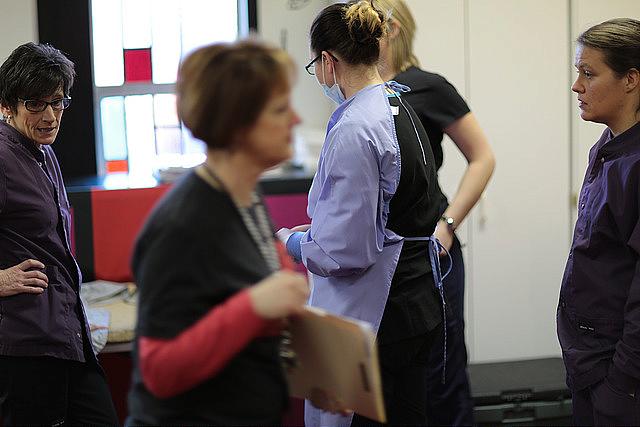Why don’t health journalists interview nurses? We asked them.
When was the last time that you interviewed a nurse for a story on something other than staffing or scope of practice?
Can’t recall? Most health journalists would say the same. We recently published a study of nurses’ representation in health news media and found that they were cited as sources in only 2 percent of stories. And most of these were about scope of practice of nurse practitioners or another nursing workforce topic. Nurses were never cited as sources in stories focused on health policy and rarely on the business of health care, despite being in policy positions in government or responsible for overseeing the largest proportion of a health care organization’s budget.
Our study replicated a 1997 study on nurses and media commissioned by Nancy Woodhull, a founding editor of USA Today who was concerned about women’s representation in newsrooms and the news. Conducted at the University of Rochester, the study examined all health news stories published by leading national and regional newspapers, along with news weeklies and trade publications like Modern Healthcare. For our version of the study, we partnered with the Berkeley Media Studies Group to randomly sample the same publications and found that there had been no improvement in nurses’ representation in health news media over the last 20 years. While women have long been underrepresented in news stories, the numbers are ticking up — women were used as sources 26 percent of news stories in 2015, up from 17 percent in 1997.
So we wanted to find out why the largest group of health professionals — 90 percent of whom are women — remained invisible in health news stories, despite growing numbers of nurses with masters and doctorates who are NIH-funded researchers, executive administrators and expert clinicians. We interviewed 10 health news journalists about their experiences using nurses as sources and found a consensus around the following themes:
1. Journalists and newsrooms often have biased views of women, nursing and positions of authority in health care.
This includes having to justify using nurses as sources with supervising editors who want to quote “rock star docs.” Most newsrooms continue to use the AP Stylebook, which permits the use of M.D. after a physician’s name but not RN after a nurse’s name. If the CEO of a hospital is a physician, you will know that by the Dr. before or M.D. after their name; if the CEO is a nurse, you will likely not know that. Why is it important to know in one case but not the other?
2. Journalists told us that they didn’t fully understand what nurses do.
They are not unique. Even many physicians don’t understand the breadth of knowledge and skill that nurses have, and we have not always been very good at explaining it. One journalist we interviewed had figured out that nurses who work with people with diabetes are excellent sources on what it takes for people to better manage their diabetes — but this was an exception.
3. Public relations staff of health care organizations and universities never recommend a nurse for a reporter’s interview.
Sometimes the PR staff doesn’t provide a nurse even when a reporter asks for one. Clearly, there’s work to be done with educating PR staff, as well as CEOs and other leaders in health care, about the expertise that nurses have to offer. One journalist who covers cardiac issues told us that she contacts an expert nurse in a hospital cardiology department to get background and figure out the nuances of the story. But she can never quote the nurse because the cardiac service’s physician is one of those “rock star docs” who insists that only he speak to the media.
4. Nursing isn’t media savvy.
Journalists said that they almost never receive press releases from nursing associations or nursing journals about something that is new or cutting edge. Individual nurses may not respond to a request for an interview in a timely fashion or may want to be anonymous. So there is a lot that nursing itself needs to address.
We like to remind health journalists: “If you’re not interviewing a nurse, you may be missing the best part of the story.” Nurses bring unique perspectives on patients’ and families’ experiences with health, illness and health care. Many know only too well the impact that health and social policy can have on people’s lives. And they know what is needed to transform a dysfunctional health care system.
Our advice? First, discuss these studies in your newsroom and reflect on your own reporting. Second, get to know nursing associations the same way you know medical associations. There are more than 100 general, specialty or ethnic nursing associations, and most can help you find the right nurse for your story. Third, insist that a PR staff for a university with a school of nursing or a health care organization find you a nurse to interview. Finally, know that when one nurse fails to respond to your request for an interview, many others stand ready to respond.
Diversity of sources is a hallmark of excellence in journalism. How does your reporting stack up?
**



